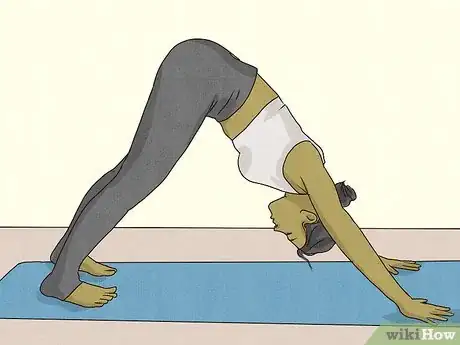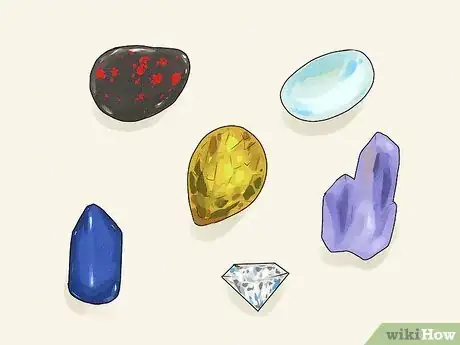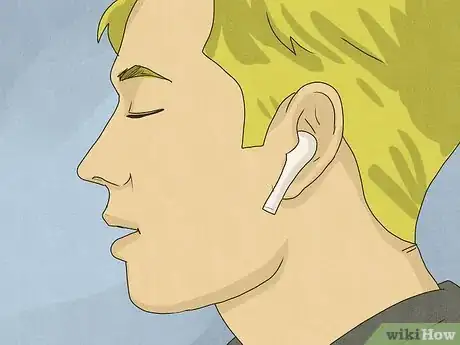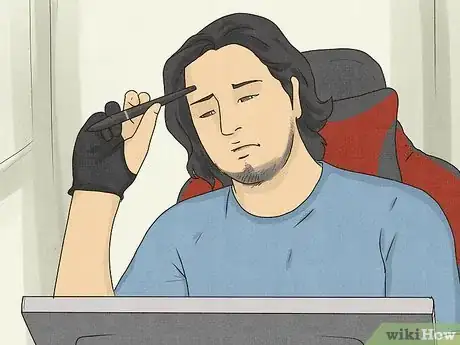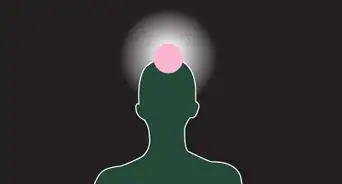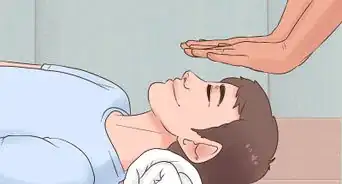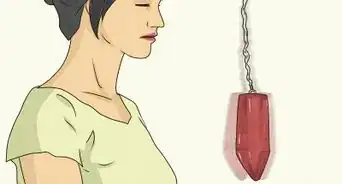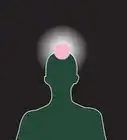This article was co-authored by Emily Christensen and by wikiHow staff writer, Amy Bobinger. Emily Christensen is a Shamanic Spiritual Advisor, Reiki Master, and the Founder of Rainbow Raaja based in Southern California and now King County, Washington. Emily has over six years of experience as a Massage Therapist and in using tarot cards, crystal therapy, light work (reiki, light codes, energy therapy), and shamanic healing. She received Reiki Master training from the Hands on Healing Institute. Emily is also a certified Bodywork Therapist by the California Massage Therapy Council and an Ordained Shamanic Minister with the Universal Life Church.
There are 10 references cited in this article, which can be found at the bottom of the page.
wikiHow marks an article as reader-approved once it receives enough positive feedback. In this case, 100% of readers who voted found the article helpful, earning it our reader-approved status.
This article has been viewed 330,338 times.
Our body is divided into seven chakras, or energy centers, with each chakra reflecting a region of the physical body as well as personality traits. Try the following strategies to control your chakras and achieve balance among them, promoting optimal emotional, mental, and spiritual health.
Steps
Where should I start when I'm learning to control my chakras?
-
1Try meditation to get in touch with your higher self. Find a quiet place where you can sit comfortably, then breathe deeply and focus on each of your chakras one at a time. As you do that, pay attention to whether you feel physically or emotionally unbalanced in that area. Keep in mind that your energy may be blocked, but you can also have too much energy concentrated in that area.[3]
- Visualization, mantras, yoga, sound healing, Reiki, and crystals can all help rebalance this energy if it's blocked or overactive.
- Guided meditations can be really helpful when you're first learning to control your chakras. Try searching for something like "chakra balancing guided meditation" on YouTube to get started.
-
2Visualize each chakra as you're meditating. Close your eyes and picture a spinning wheel of light coming from your body. Imagine that the light is same color as the chakra. Start with your root chakra and work your way up one at a time, visualizing that the spinning light is able to move freely.
- For instance, you'd imagine that your root chakra is a deep, strong red shade. As you picture it spinning, imagine releasing anything that might be blocking that energy. Then, move up to your sacral chakra, and so on, until you get to your crown.
How do you know if your chakras are unbalanced?
-
1You might feel constricted in a certain area if your chakra is blocked. Think about whether there's anything you're really struggling with right now—are you having trouble expressing yourself in some aspect of your life? It could be due to a blocked chakra, meaning you're not able to send energy out through that channel. Controlling your chakras can help this.[10]
- If your sacral plexus is blocked, for instance, you might feel like you can't get in touch with what you really desire in life, or you might feel like you're not able to be creative.
- If your throat chakra is blocked, you may not feel like you're able to express yourself.
-
2You could feel too much energy if a chakra is overactive. While people usually talk about blocked chakras, you could also be losing too much energy in an area of your life, as well. If there's anything that's making you feel drained, it may help to put extra effort into controlling the associated chakra.[11]
- If your heart chakra is overactive, you might put too much emphasis on your relationships with others instead of being self-reliant.
- If your throat chakra is overactive, you might speak too much and not listen enough.
Expert Q&A
Did you know you can get expert answers for this article?
Unlock expert answers by supporting wikiHow
-
QuestionWhat kind of crystals will balance and unblock my chakras?
 Emily ChristensenEmily Christensen is a Shamanic Spiritual Advisor, Reiki Master, and the Founder of Rainbow Raaja based in Southern California and now King County, Washington. Emily has over six years of experience as a Massage Therapist and in using tarot cards, crystal therapy, light work (reiki, light codes, energy therapy), and shamanic healing. She received Reiki Master training from the Hands on Healing Institute. Emily is also a certified Bodywork Therapist by the California Massage Therapy Council and an Ordained Shamanic Minister with the Universal Life Church.
Emily ChristensenEmily Christensen is a Shamanic Spiritual Advisor, Reiki Master, and the Founder of Rainbow Raaja based in Southern California and now King County, Washington. Emily has over six years of experience as a Massage Therapist and in using tarot cards, crystal therapy, light work (reiki, light codes, energy therapy), and shamanic healing. She received Reiki Master training from the Hands on Healing Institute. Emily is also a certified Bodywork Therapist by the California Massage Therapy Council and an Ordained Shamanic Minister with the Universal Life Church.
Spiritual Advisor & Founder of Rainbow Raaja A practitioner chooses crystals based on your ailments or blocks and whether the crystal feels responsive to the blockage. Although you can read every crystal book on the market, crystals (like humans) are unique and they "speak" when you listen. A crystal will vibrate, pulse, or change temperature when they can be of use. It takes practice and learning to connect with the life force of the crystal and allowing it to guide you. There are generic crystals well known for certain chakras or health concerns, but to be truly effective, you have to learn to listen to your own intuition and the crystal itself without second guessing yourself.
A practitioner chooses crystals based on your ailments or blocks and whether the crystal feels responsive to the blockage. Although you can read every crystal book on the market, crystals (like humans) are unique and they "speak" when you listen. A crystal will vibrate, pulse, or change temperature when they can be of use. It takes practice and learning to connect with the life force of the crystal and allowing it to guide you. There are generic crystals well known for certain chakras or health concerns, but to be truly effective, you have to learn to listen to your own intuition and the crystal itself without second guessing yourself.
References
- ↑ https://thechalkboardmag.com/understanding-the-chakras
- ↑ https://www.theyogacitizen.com/your-quick-guide-to-the-chakras-what-you-need-to-know-to-take-control-of-your-inner-energy/
- ↑ https://www.researchgate.net/publication/342562977_A_Brief_History_of_the_Chakras_in_Human_Body
- ↑ https://thewholeu.uw.edu/2018/10/15/chakras/
- ↑ https://thewholeu.uw.edu/2018/10/22/yoga-month-chakras-part-two/
- ↑ https://www.chakras.info/chakra-stones//
- ↑ https://iarp.org/chakra-basics/
- ↑ https://www.westcoastyogaperth.com/2020/06/30/solfeggio-frequencies-and-the-chakras/
- ↑ https://my.clevelandclinic.org/ccf/media/files/Wellness/reiki-factsheet.pdf
- ↑ https://www.theyogacitizen.com/your-quick-guide-to-the-chakras-what-you-need-to-know-to-take-control-of-your-inner-energy/
- ↑ https://www.theyogacitizen.com/your-quick-guide-to-the-chakras-what-you-need-to-know-to-take-control-of-your-inner-energy/
- ↑ https://www.cbr.com/naruto-characters-best-chakra-control/
About This Article
To control chakra, begin by visualizing the root chakra at the base of your spine. Then, focus on each progressing chakra one at a time, centering your energy in that area of your body. After the root chakra, your progression will be: lower abdomen, navel, chest, throat, forehead, and crown, on top of your head. Finally, imagine that there’s a powerful white light uniting all of your chakras and rooting you to the ground. Read on for instructions for meditating with crystals and examples of yoga poses that will help you control each chakra!


